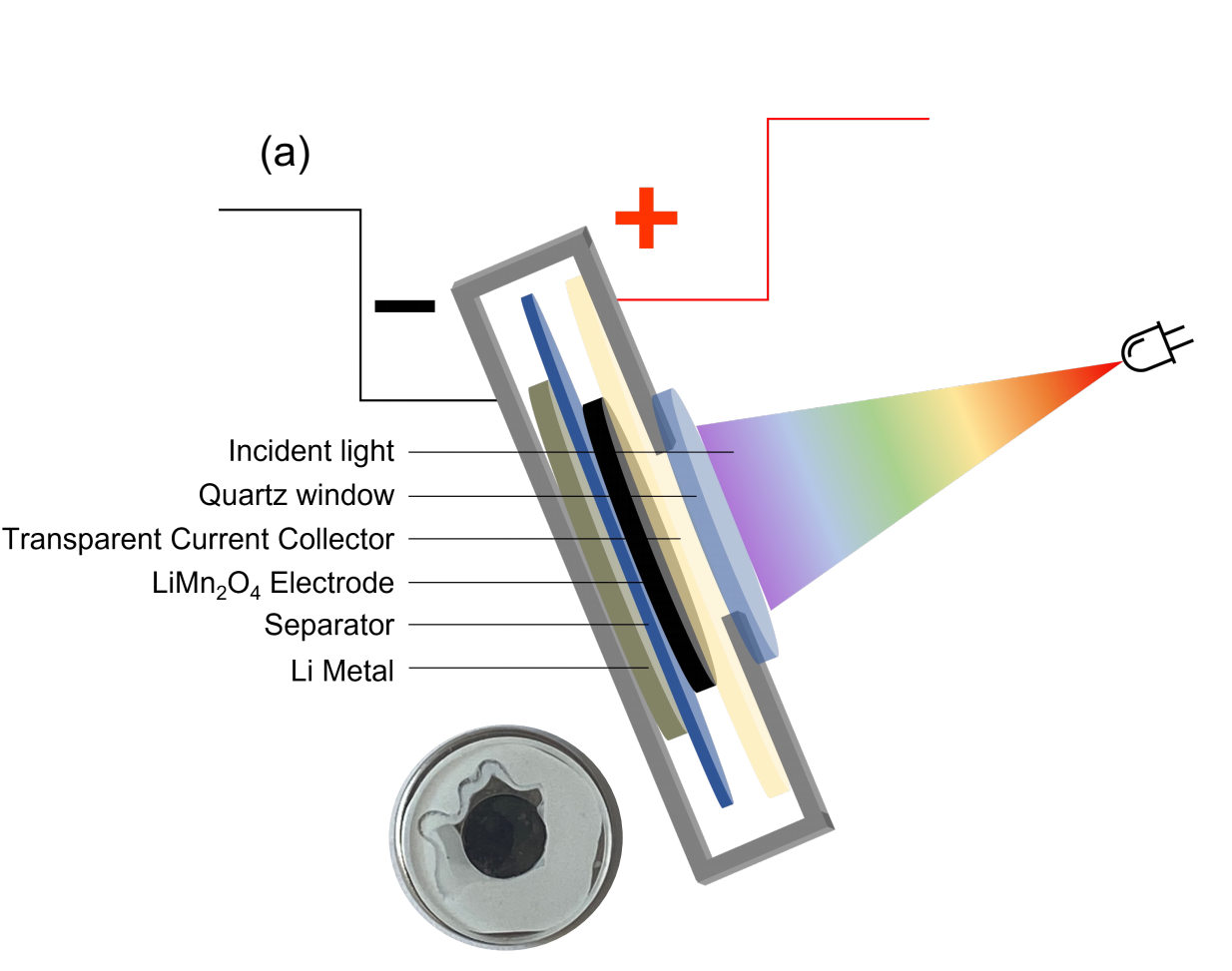

The growth in electrified transportation has benefited from the massive worldwide research efforts used to discover and improve electrode materials and electrolytes. Nevertheless, lithium-ion batteries still suffer from a slow-charging limitation. The study of light interaction with energy storage materials has gained interest for use in photo-rechargeable batteries and integrated solar energy storage systems, though there have been few studies specifically investigating light interaction with commercially relevant battery materials. Facilitation of electron movement in a battery material is a key for lowering the resistance to flow of charge. Administration of light to induce light-matter interactions is a possibility to locally alter the electronic nature of the material. To date, there have been several computational and experimental studies investigating the electronic structure of LiMn2O4 (LMO), which, when re-examined in the context of illumination, can help to inform the mechanism of photo-acceleration. Considering that photo-excitation can influence redox processes, our group here investigates the effect of discrete wavelengths of light on the electrochemical performance of the LMO cathode in voltage holds or dynamic charging processes in a LIB.
We show that illuminating with red light (2.0 eV) results in a higher charging rate compared with both ultraviolet (3.2 eV) illumination of equal optical power and dark conditions. The selective effectiveness of red light in enhancing electrochemical kinetics is then analyzed in the context of the electronic structure and possible excitations, revealing the importance of d-d orbital electronic transitions in Mn. We also correlate these conclusions with X-ray absorption data, which unveil that the cubic crystal lattice shrinks under red light and that the magnitude of the change, manifested in lowering of Mn–Mn bond length, is a function of the electrode state of charge. The results presented here set a strong foundation for fundamental understanding of photo-accelerated fast charging in LMO and present a path forward for identifying other materials with the potential for photo-accelerated fast charging. Our group is actively pursuing other advanced materials that can absorb light to modulate their structure for increasing charge transfer rates.

